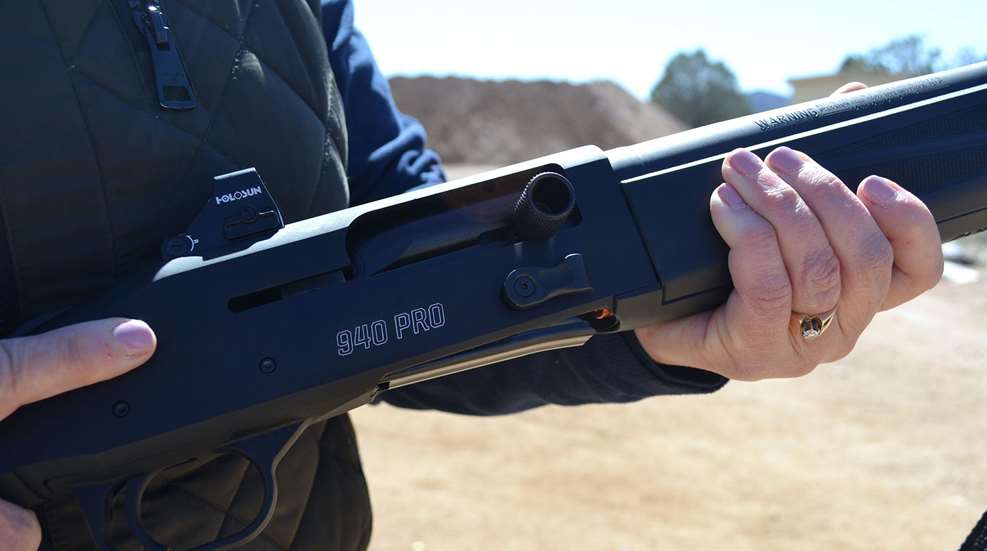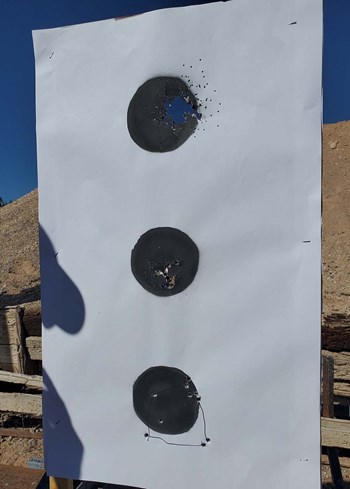
I’m a strong proponent of using a shotgun as your primary home-defense firearm under the right conditions. Because of the variety of loads you have to choose from and the near-infinite ways you can customize the gun itself, a shotgun is an incredibly versatile defensive firearm. Given the right configuration, almost anyone can handle a shotgun capably. Shotguns have a lot of things going for them when it comes to home defense.
That said, if all you know about shotguns is what you’ve seen in the movies, you’re probably sorely misinformed about what a shotgun is actually capable of and how it works in a defensive scenario. You know how every bad guy on TV who gets shot at with a 12-gauge goes flying through a saloon window or gets physically knocked back by the force of the blast? Yeah, that’s just not what happens in real life. Let’s take a look at some of the myths and realities of defensive shotgun use.
Myth #1: The Sound of a Shotgun Will Scare a Bad Guy Away
If the hero in an action movie is toting a shotgun, at some point there will be a scene where she’s hiding behind a door about to jump into the fray, and she’ll rack the slide on the gun (because it’s always a pump-action) just before she goes charging in to save the day. In reality, she should have done that long before she got to the moment of truth, but directors and actors can’t resist it because the sound is so distinctive and cool. That sound is such a big deal that it spawned a popular self-defense myth: “Just work the pump on your shotgun and the sound will scare the bad guy away.”
Reality: OK, maybe. It might. The “shuck” sound of a pump shotgun being loaded is unmistakable and intimidating indeed, but you have no idea what kind of bad guy you’re about to face, not to mention how many bad guys there are, what they are armed with, what kind of state of mind they’re in or what substances might be in their system. The fact is that you have absolutely no guarantee that you can scare an intruder away, and operating under the assumption that you can might cost you dearly. Don’t bet on this myth.
Besides, the “shuck” is how you chamber a round, and you probably should have done that already. If you have, and you’re running the pump again just for the sound effect, you’re dumping a perfectly good shell on the ground.
Myth #2: Just Shoot It in the Air
A certain president is famous for advising his wife to take her double-barreled shotgun out on the balcony and “fire two blasts outside the house” in a home-defense situation. While this advice is loaded with problems, among the biggest is the obvious lack of safety: Firing at unknown sources in an unknown direction is wildly dangerous and can land you in legal trouble. That aside, some well-meaning gun owners might take the “just shoot it in the air” myth to heart, believing that firing a shotgun in the air is safe—after all, hunters do it all the time with birds.
Reality: Firing a warning shot (with any firearm) might be a bad idea for a number of reasons, whether you aim it in the air or not, and depending on where you live, it might even land you in hot water with the law. Moreover, just because bird hunters fire shotguns in the air doesn’t mean it’s an appropriate use of the gun in a defensive situation. What goes up must come down, of course, and your home defense shotgun is probably loaded with larger shot than a hunter’s gun. Even if a warning shot wasn’t a bad idea, you can’t account for where that shot is going to eventually land—especially if you’re not out in the middle of nowhere like you are when you’re hunting.
Myth #3: A Shotgun Is a Sure-Fire Man-Stopper
Television and movies would have you believe that anyone shot with a shotgun is toast—the threat is immediately neutralized because the shotgun is such a powerful firearm. Handgun not doing the trick? The zombie or grizzly bear or drugged-up bad guy is still advancing? Pull out the shotgun and problem solved, end of story.
Reality: Yes, the shotgun is a powerful firearm, but there are myriad factors that go into determining its effectiveness against threats. The biggest factor is load selection. A light load of small shot, like the No. 8 shot you use on the skeet range, might barely penetrate a threat on the far side of your living room. If the bad guy is wearing a leather jacket or a few cold-weather layers? Forget about it—it’s possible that shotgun blast might not even break the skin. I mean, he won’t be happy about it, but he won’t fly through the air backward and he certainly won’t be out of commission. In truth, a shotgun with a poorly chosen load can be far less effective than a handgun. Choose your loads wisely: You have plenty of options depending on your home and your family situation, but no load in the world is a guaranteed instant man-stopper in every scenario.
Myth #4: Shotguns Are Easy Because You Don’t Have to Aim
Because a shotgun (not shooting slugs) fires a cone-like pattern of pellets rather than a single projectile, people get the idea that shotguns don’t have to be aimed—just point the gun in the general direction of the threat and fire away. The pattern will open up, so, they reason, at least some of it will impact where it should.
Reality: I can’t say this enough: Defensive shotguns have to be aimed! While it’s true that a shotgun does give you more leeway with its pattern, that leeway isn’t nearly as much as you might think. If you’ve never patterned your home-defense shotgun at a variety of ranges (specific to the ranges at which you might have to engage a threat in your own home), you should make it a priority to do so. Data and opinions vary, but a generally accepted good home-defense range to focus on is between three to seven yards.
 Take a look at this photo (right) showing three different loads fired from a properly aimed shotgun. The top target shows No. 7 ½ shot fired at a distance of five yards. The center target shows 00 Buck fired at a distance of five yards. The bottom target shows Federal’s Flite Control tactical buckshot fired at a distance of 10 yards.
Take a look at this photo (right) showing three different loads fired from a properly aimed shotgun. The top target shows No. 7 ½ shot fired at a distance of five yards. The center target shows 00 Buck fired at a distance of five yards. The bottom target shows Federal’s Flite Control tactical buckshot fired at a distance of 10 yards.
Notice how none of the patterns are larger than 6” across. That’s a small margin of error. At those distances, it would be incredibly easy for that 6” pattern to miss its target if the gun were not properly mounted and aimed. One little flinch or jolt or other disruption to the shot will cause the shooter to completely miss her target with a pattern of this size.
You must aim a shotgun in a defensive scenario. A red-dot optic is a great way to help you aim more precisely in the heat of the moment, but you don’t need any sort of sight if they’re not your thing, assuming you know how to mount and shoot a shotgun properly.
Shotgun myths abound, and some of the myths are even grounded in reality. But knowing the facts about how defensive shotguns work will allow you to make a more informed decision about whether or not a shotgun is the ideal home defense firearm for you.














































